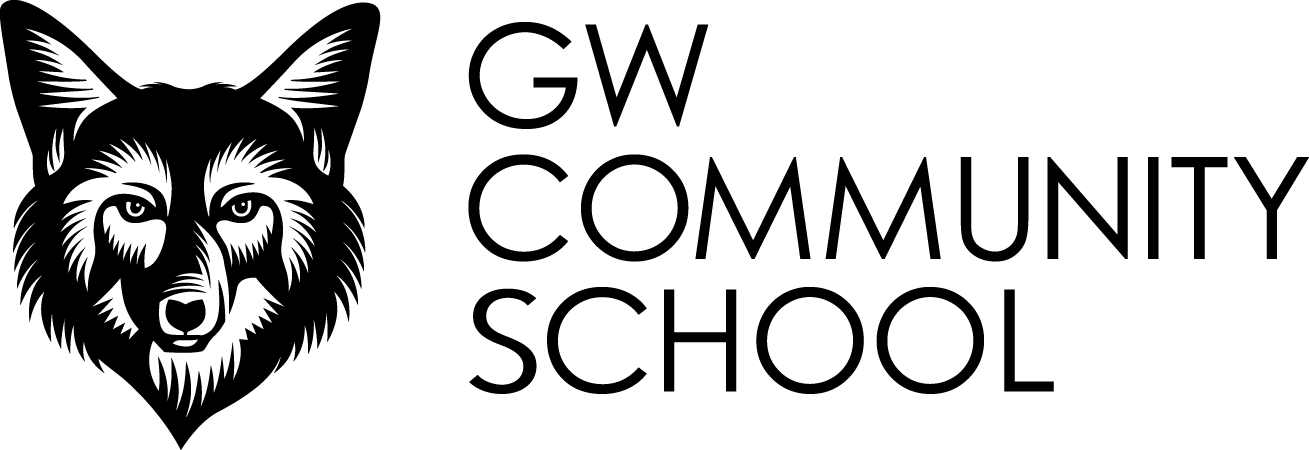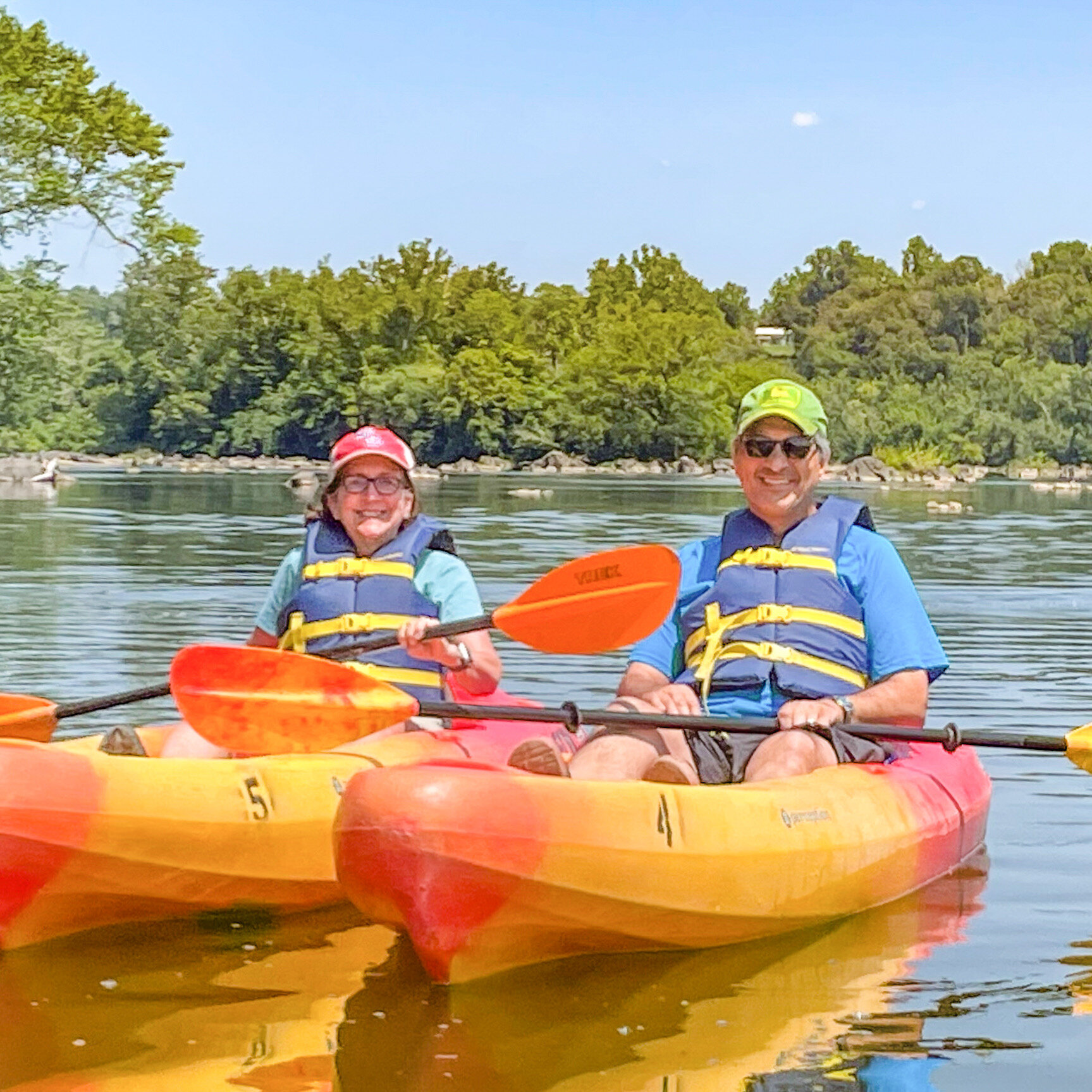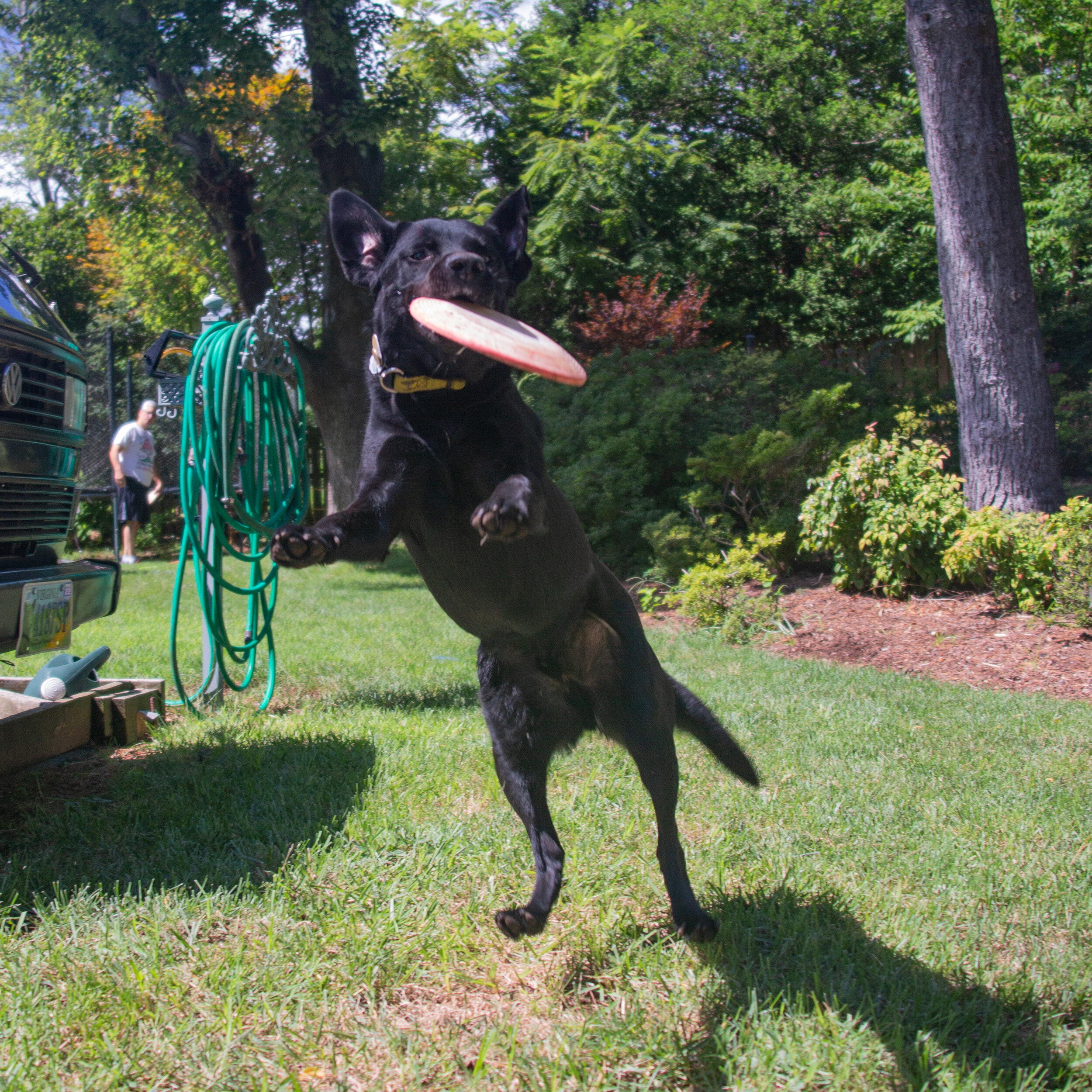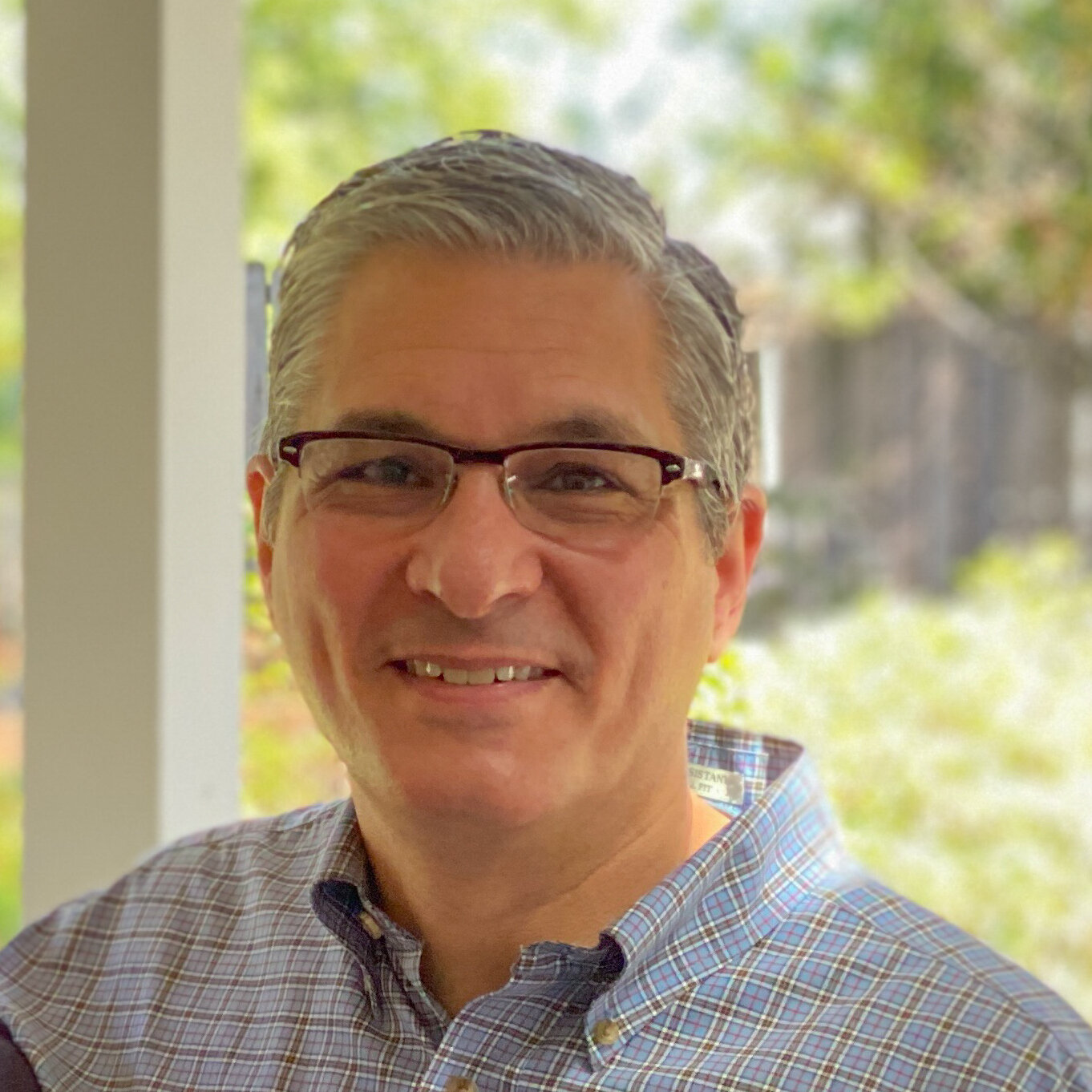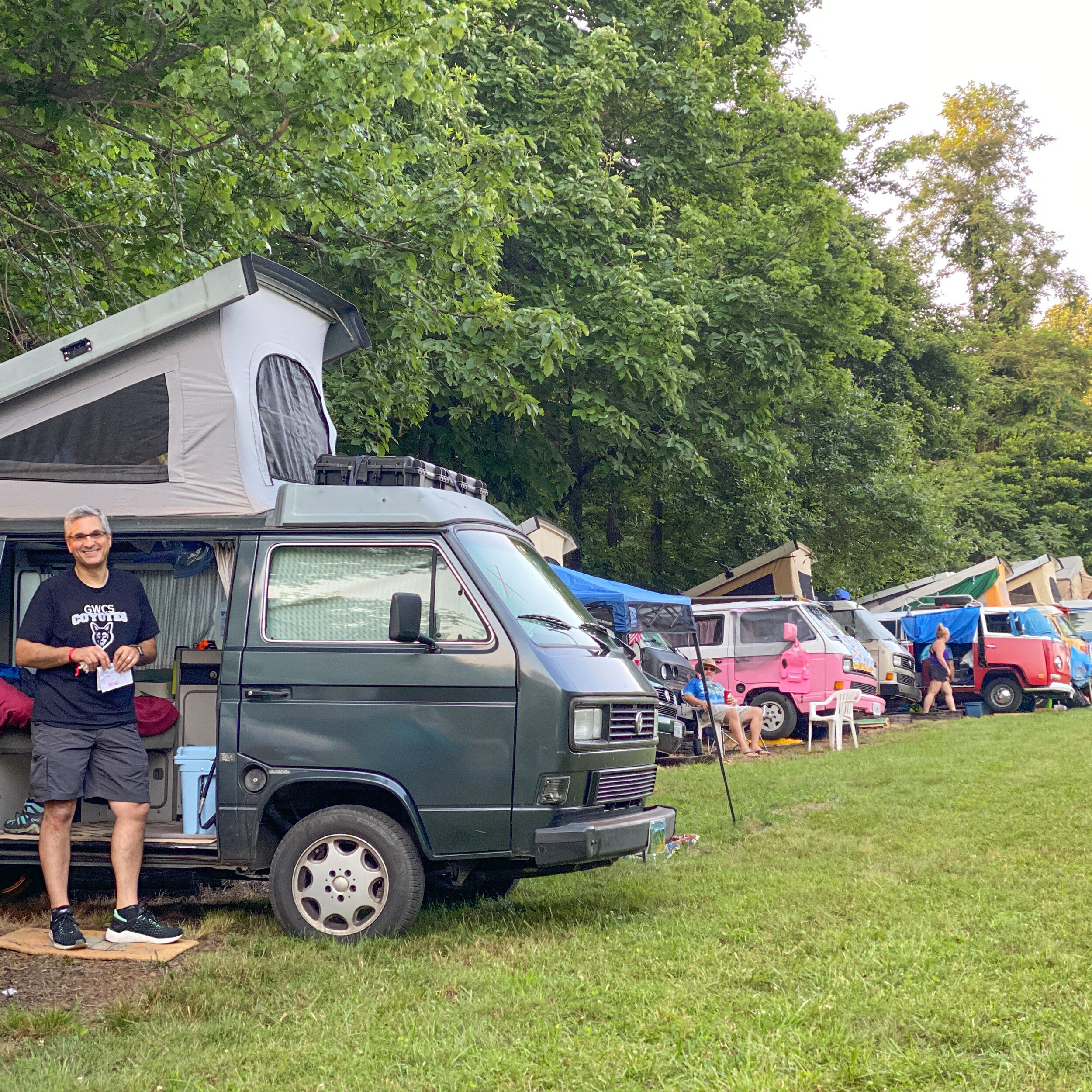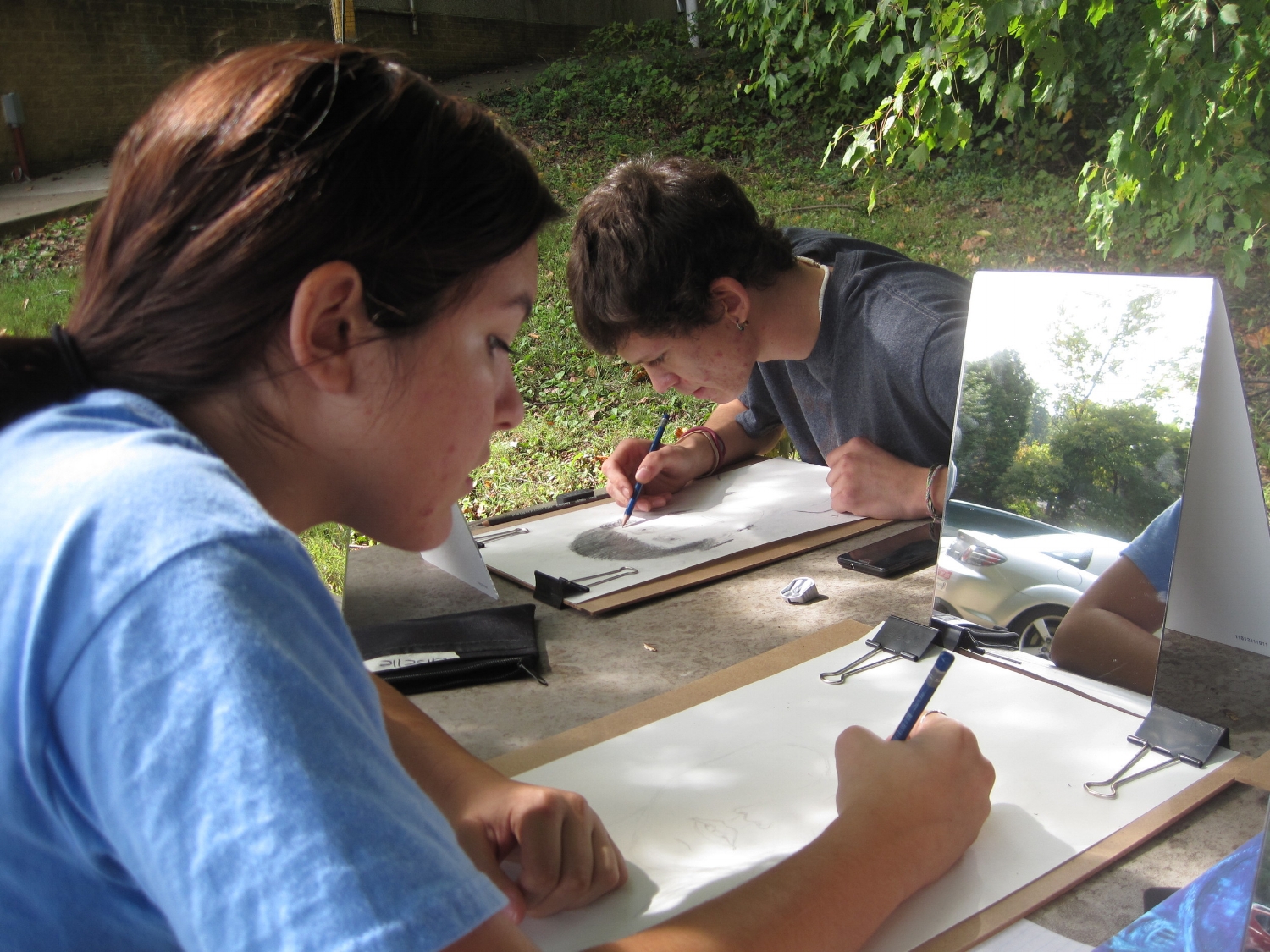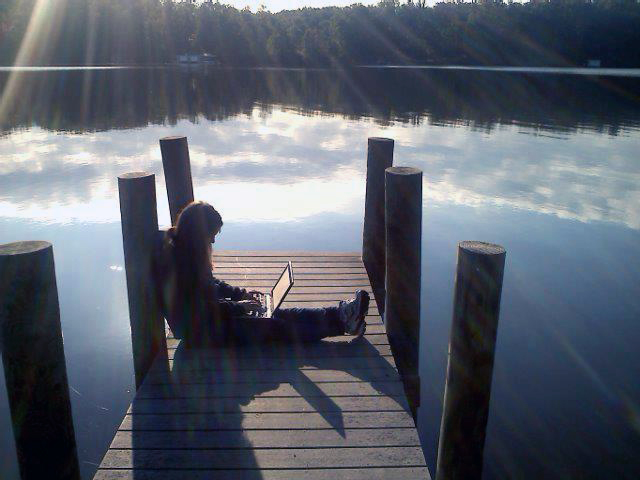JOE PARISI - MATH
Joe Parisi lives in McLean with his wonderful wife Suzanne (not “wonderful” in the obligatory bio sense but in the actual, demonstrable, long-marriage-still-fun sense) and Max and Heifer, two dogs who complete the household ecosystem, functioning as both comic relief and loyal ballast. The Parisi’s son, Anthony, is a past graduate of GW Community School and has achieved that rare post–high school equilibrium where he both lives and works in the area (close enough to show up for dinner, far enough to maintain the illusion of independence) and retains the superpower of being available to move whatever heavy, ungainly object his parents can’t manage alone. He is—without hyperbole or parental bias—an all-around excellent son, the kind who makes you feel simultaneously proud, grateful, and vaguely unworthy.
Mr. Parisi graduated from the University of Dayton with a B.S. in electrical engineering and received his MBA from John Carroll University with concentrations in management, finance, and marketing—fields that together form a sort of academic Venn diagram of “what makes institutions move.” After a career in the thickets of biomedical engineering, Mr. Parisi worked at the United States Patent and Trademark Office, a place where innovation meets bureaucracy in a marriage of necessity. He later earned his law degree from George Mason University School of Law focused on the endless permutations of intellectual property, which is either a height of intellectual rigor or a particularly refined form of masochism, depending on your view.
In the classroom, Mr. Parisi is both a numbers guy (Geometry, Algebra 2, Probability & Statistics, Precalculus) and a words guy (Freshman English, Sophomore English, Senior Honors English) toggling between the Euclidean and the Shakespearean. Before that, he was an adjunct professor at the American University College of Law teaching patent law and writing classes.
Recently, Mr. Parisi worked as a partner in a patent firm by day while playing old geezer hockey at night. He attends concerts with the enthusiasm of someone who refuses to calcify into old age, and he and Suzanne take to the road in their Volkswagen camper, a vehicle whose stubborn survival might be the most eloquent metaphor for a shared spirit of persistence and play.
Courses taught
Honors English: True Crime, Justice, and Power
This course explores the captivating, and sometimes disturbing, world of true crime stories and the dark gravitational pull of murder media, but not the blood-and-guts TV version your aunt binge watches with wine and a weighted blanket. It’s about what happens when real people’s real deaths become content, become “narrative,” become, in some cases, strangely soothing background noise while someone folds laundry. In this class, we will not just consume true crime—we will dissect it, deconstruct it, drag it squirming into the fluorescent light of ethical inquiry. We will ask uncomfortable questions (e.g., Why does this feel so good to listen to? Why are so many of us, in a world already rife with real trauma, voluntarily adding additional horror into our minds?), and then we will interrogate the asking of the questions themselves. We’ll read books, watch documentaries, listen to podcasts and figure out how each format distorts and dramatizes what is ostensibly "truth." We’ll discuss the difference between justice and closure, justice and vengeance, and justice and entertainment. Spoiler: They are not the same.
Course Advisory Due to the nature of true crime, you will be exposed to upsetting content—violence, murder, sexual assault, real people at their absolute worst. If it ever feels like too much, you may step out of class. No explanation required. Ever.
Honors English 11-12 | Rhetoric
It all begins inside: inside the heads of students. There are ideas in there and language and emotions and endless possibilities. Writing is pulling together all of that inside stuff. Writing is practicing getting that inside stuff onto the page. Students rehearse and practice by doing. Teachers help support the rehearsals and the practices by helping students understand strategies that they use and by suggesting others that they can try. The more effective the practice and rehearsal, the more effectively we can communicate our ideas and opinions. The rhetoric class is designed to help students study, develop, and practice their writing and speaking skills using the power, beauty, and effectiveness of language. The rest of the class raises questions as the writer’s text emerges. Through readings, discussions, and writing assignments, students further develop their writing and speaking skills and learn to effectively reason and communicate ideas. We assist the writers by encouraging and supporting the writers’ decision-making as the pieces evolve. The rhetoric class helps to develop forms that pieces can take by experimenting with language. Ideas come first, and writers test the range of possibilities—they learn about adding and deleting ideas. They learn to arrange and rearrange and expand and contract ideas as a piece develops. Students will practice and hone their skills by reading, writing, debating, and presenting. We will analyze how authors write rather than simply looking at what authors write.
Algebra II
Algebra II, at its core, an extended meditation on the idea that the world—messy, ambiguous, stubbornly real—is nonetheless often legible through the strange and beautiful lens of mathematics. We will attempt to wrest meaning from data: not merely by counting or listing or plotting, but by organizing, summarizing, and describing it in ways that flirt with objectivity. We will draw a lot of graphs. A lot. Possibly to the point of absurdity. But behind each is a lurking insight—something about growth, decay, symmetry, catastrophe.
The bulk of our time will be spent in a kind of intellectual exploration through functions: quadratic, polynomial, exponential, logarithmic (each more intricate than the last), treating them not as abstract nuisances but as living forms, things that breathe through coordinates and limits and discontinuities. These are not just equations. They are relationships —curious, often unruly ones—that echo real-world phenomena: populations, investments, pandemics, sound waves, algorithms deciding what video you’ll watch next.
Instruction will be a messy, thoughtful mix of demonstration and discovery. We will not “plug and chug.” Instead, we’ll pause. We’ll squint at the problem. We’ll ask, “What is this really asking?” before we ever touch a calculator. Because the goal isn’t just getting the right answer—it’s understanding why the answer exists at all, and what it tells us, and whether we should trust it.
Statistics
They say that fifty-six-point-seven percent of all statistics are made up right there on the spot and that eighty-two-point-four percent of people believe them whether they’re accurate statistics or not. Regardless of what you believe, taking a statistics course provides improved numerical data literacy and a basis with which to organize data, test hypotheses, and make decisions based on objective criteria. If you have ever looked for H-values shopping at H-Mart, tried to watch the Bernoulli Trials on "Court TV," or think that a standard deviation is a criminal offense in six states, then this course will put you on the road to statistical literacy. Never again will you order a Poisson Distribution in a French restaurant. Statistics is a practical course in which students focus on the statistical thinking behind data collection, analysis, and drawing conclusions from data. The course helps students become more discerning consumers of statistics by studying four broad conceptual themes: exploring data with graphical and numerical techniques, developing plans for collecting and analyzing data, using probability to anticipate results, and confirming models and hypotheses through statistical inferences.
